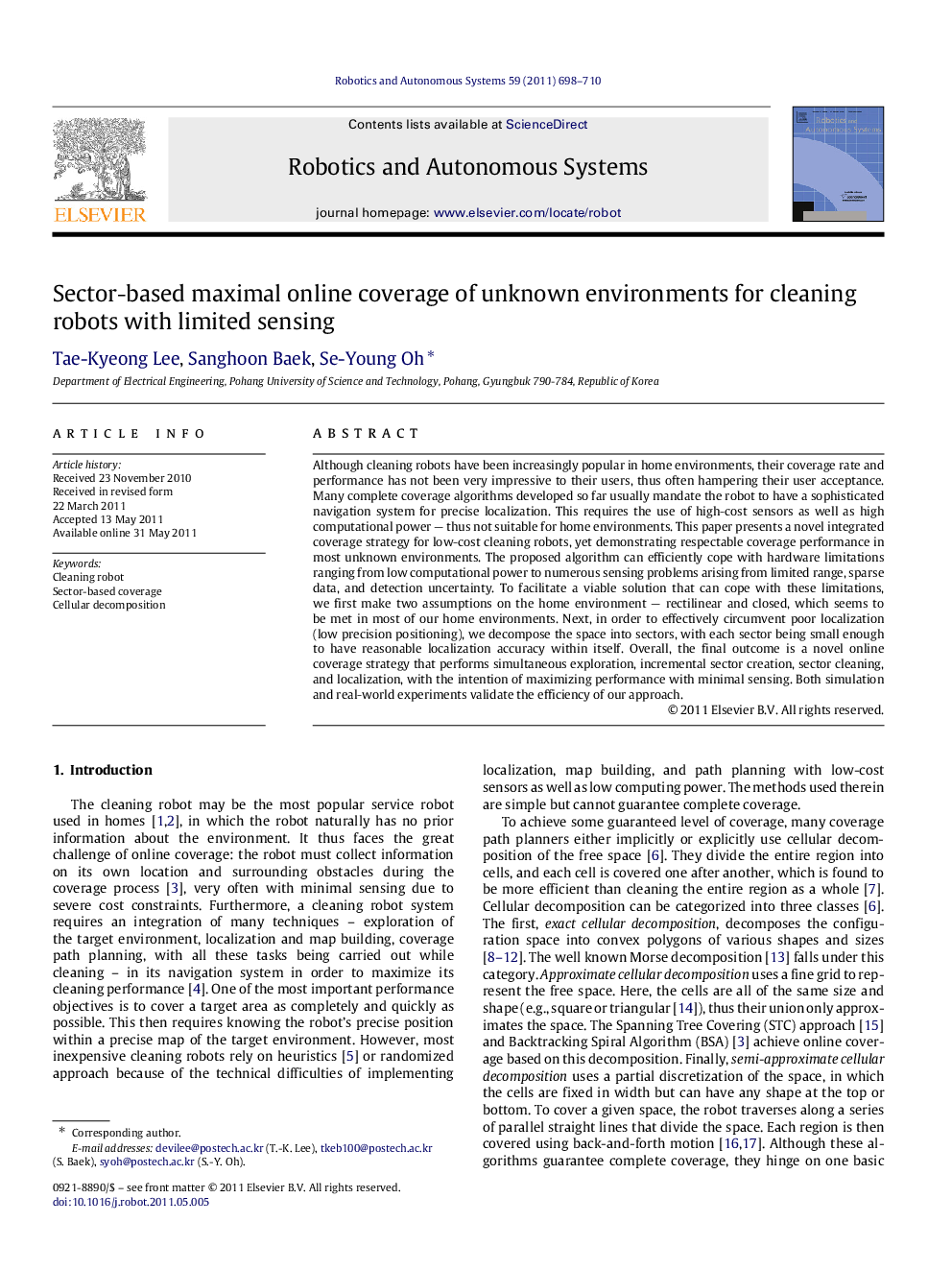| کد مقاله | کد نشریه | سال انتشار | مقاله انگلیسی | نسخه تمام متن |
|---|---|---|---|---|
| 413188 | 679903 | 2011 | 13 صفحه PDF | دانلود رایگان |

Although cleaning robots have been increasingly popular in home environments, their coverage rate and performance has not been very impressive to their users, thus often hampering their user acceptance. Many complete coverage algorithms developed so far usually mandate the robot to have a sophisticated navigation system for precise localization. This requires the use of high-cost sensors as well as high computational power — thus not suitable for home environments. This paper presents a novel integrated coverage strategy for low-cost cleaning robots, yet demonstrating respectable coverage performance in most unknown environments. The proposed algorithm can efficiently cope with hardware limitations ranging from low computational power to numerous sensing problems arising from limited range, sparse data, and detection uncertainty. To facilitate a viable solution that can cope with these limitations, we first make two assumptions on the home environment — rectilinear and closed, which seems to be met in most of our home environments. Next, in order to effectively circumvent poor localization (low precision positioning), we decompose the space into sectors, with each sector being small enough to have reasonable localization accuracy within itself. Overall, the final outcome is a novel online coverage strategy that performs simultaneous exploration, incremental sector creation, sector cleaning, and localization, with the intention of maximizing performance with minimal sensing. Both simulation and real-world experiments validate the efficiency of our approach.
► An efficient coverage algorithm was developed for robots with low grade sensors.
► We divide the target environment into “sectors” for coverage efficiency.
► This coverage is maximized by generating sectors alongside the wall.
► The overall algorithm incorporates localization, map building, and exploration.
Journal: Robotics and Autonomous Systems - Volume 59, Issue 10, October 2011, Pages 698–710